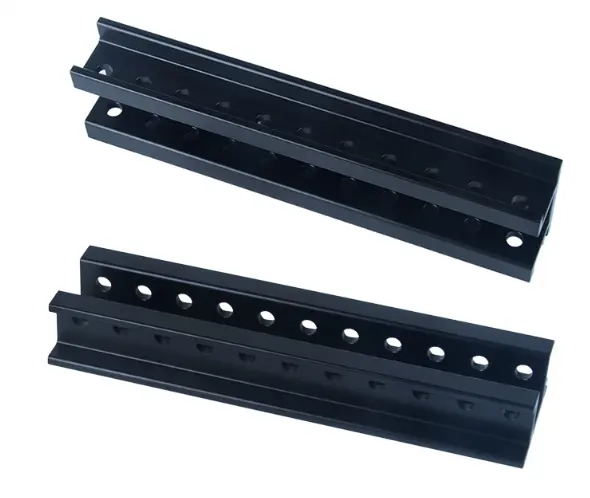Anodized Aluminum Metal | Durable, Decorative & Custom Finishing
What is Anodized Aluminum Metal?
Anodized aluminum metal is aluminum that has been subjected to the process of electrochemical oxidation known as anodizing, which improves the surface characteristics. In the anodizing process of aluminum, the aluminum is used as the anode of an electrolytic cell, and oxygen ions in the electrolyte combine with the atoms of aluminum on the surface. This coordinated oxidation forms a micro pore oxide coating that is tougher and harder, and more adhesive than the underlying raw metal. The anodized material is not a coating or a coating that is applied onto the aluminum surface, but a part of the aluminum surface; hence, it is chemically stable, non-peeling, and extremely resistant to corrosion and wear.
Technical Overview of the Aluminum Anodizing Process: A Step-by-Step
The anodizing of the aluminum process is a very specific surface treatment process, which undergoes a series of steps to maintain the quality and performance of the end products.
Preparation and Cleaning of Workpieces
Before anodizing, the aluminum parts are chemically etched and mechanically polished to cleanse them and create a smooth finish. This step provides control of micron-level anodizing and the thickness of the coating.
Electrolytic Oxidation (Anodizing Stage)
The purified aluminum is submerged in an acidic electrolyte bath, which is usually sulfuric acid, and attached as an anode. Direct current (DC) cuts through the oxygen ions, mixes with aluminum to create an oxide layer which is dense. The formation of this oxide coating is the basis of surface hardness enhancement, abrasion, and corrosion resistance. Technical Parameters:
Electrolyte: Sulfuric acid (type II anodizing)
Voltage: 12-24 V for ornamental anodizing.
Temperature: 20 deg C (regulated by cooling systems)
Present Density: 1.5A / dm 2 standard anodizing.
Dying and Coloring
Color can be added to anodized aluminum as the microporous structure enables the absorption of organic or inorganic dyes to produce a colored anodized aluminum finish. It is a widely used step in architectural, consumer electronics, and decorative aluminum applications.
Sealing Process
Pores are then sealed after dyeing by hydration or the nickel acetate sealing process, turning the oxide into boehmite, which fixes color and improves UV and corrosion resistance.
Post-Anodizing Inspection
The quality assurance inspection of each component is performed such including a coating thickness test, adhesion test, and surface appearance test are conducted to guarantee a uniform anodized finish.

Classifications of Anodizing: Type II vs Type III Hard Anodizing
Anodized aluminum metal is done in two main forms of anodizing:
Decorative Finish (Type II) Anodizing
Sulfuric acid anodizing is known as Type II and results in an oxide layer of 5-25 μm. It suits anodized aluminum that is decorated, colored, and architectural panels.
Distinguishing Characteristics: smooth surface, color customization, excellent corrosion resistance.
Applications: Consumer products, interior design panels, enclosures.
Industrial Finish Type III Hard Anodizing
Hard coat anodizing (type III) produces a denser and thicker layer of oxide (25-100 μm) to achieve the highest wear resistance and thermal stability.
Characteristics: Excellent hardness, high abrasion resistance, and insulating.
Uses: Heavy machinery components, automotive components, marine components, and aerospace components.
The Uses of Anodized Aluminum Metal
The use of anodized aluminum metal in various industries is critical because all of them exploit its beauty and engineering strength.
Automotive Industry
Applied in ornamental fittings, the engine, bracketry, and battery housing of the EVs, anodized aluminum is designed to provide abrasion resistance and heat stability.
Aerospace Applications
Aerospace anodized aluminum components are preferred in aerospace engineering because of their ability to withstand extreme conditions in terms of lightweight strength and oxidation.
Architecture and Interior Design
Anodized aluminum paneling is available in brushed, matte, and satin finishes in a variety of decorative colors to be put on the facades and interiors.
Electronics & Enclosures
Anode aluminum enclosures offer electrical insulation, heat dissipation, and a high-quality appearance, which are suitable for consumer electronics and LED cases.
Marine Applications
Marine anodized aluminum is corrosion-resistant and made of marine-grade aluminum, ideal for boating, outdoor furniture, and hardware.
Is it Possible to Color Anodized Aluminum?
Yes! Aodinated aluminum is painted in bright colors, deep black, and bronze to gold, blue, or red. Dyeing is done by loading the color molecules into the porous oxide layer and then sealing it to prevent the color loss.
Green and Sustainable E-Anodizing
Current anodizing lines are now combined with eco-friendly electrolytes, the use of water recycling, and a closed circuit to have a minimal effect on the environment. In GD Prototypes, we embrace energy-efficient anodizing lines and AI-supported quality testing, which corresponds to the principles of Industry 4.0 and green surface treatment.
The smart anodizing process is done with the help of digital monitoring, IoT-based control systems, and AI-based coating thickness inspection, where each part is produced to micron-level precision.
Why is GD Prototypes the Preferred Supplier of Custom Anodized Aluminum Components?
We are the GD Prototypes that focus on custom anodized aluminum products, precision surface finishing, and CNC machining with anodized surface. Our services include:
- Anodizing services, Prototypes.
- Small-scale and high-volume manufacturing.
- Custom color anodizing
- Hard finish and ornamental finishes.
- Quality control, which is ISO-certified.
Are you in need of an industrial aluminum finish or decorative anodized aluminum panels? We give you complete end-to-end finishing services that offer the best consistency and look.
Conclusion
The future of surface engineering is anodized aluminum metal, both in regard to practical and decorative purposes. It offers unsurpassed corrosion resistance, superior hardness, as well as eternal beauty, and so it is the material preferred by designers, engineers, and manufacturers alike. By using environmentally friendly anodization technology, AI-driven quality control, and CNC accuracy, GD Prototyping guarantees that each project will be performed to very high standards of performance and sustainability. Get to know more about our custom anodizing and aluminum finishing capabilities at GD prototyping.

